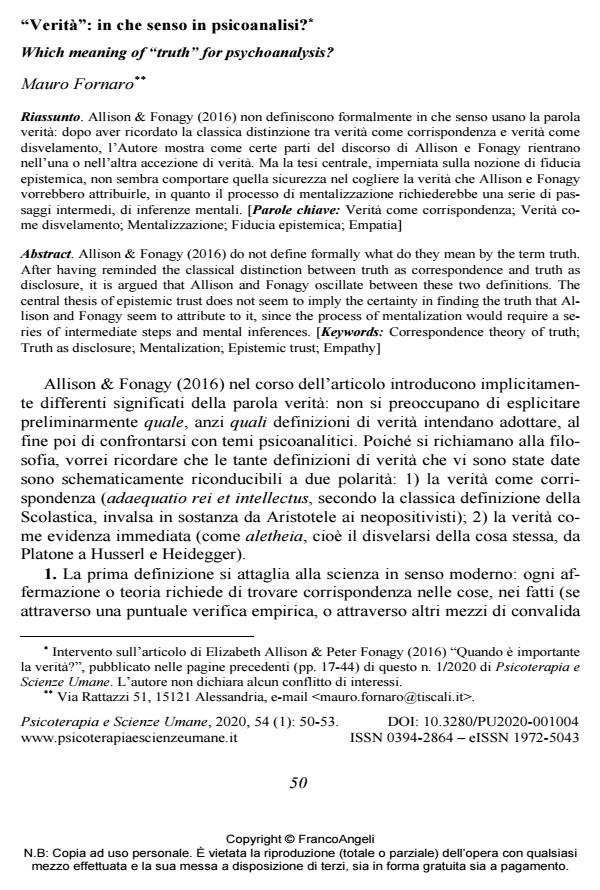Which meaning of "truth" for psychoanalysis?
Journal title PSICOTERAPIA E SCIENZE UMANE
Author/s Mauro Fornaro
Publishing Year 2020 Issue 2020/1
Language Italian Pages 4 P. 50-53 File size 56 KB
DOI 10.3280/PU2020-001004
DOI is like a bar code for intellectual property: to have more infomation
click here
Below, you can see the article first page
If you want to buy this article in PDF format, you can do it, following the instructions to buy download credits

FrancoAngeli is member of Publishers International Linking Association, Inc (PILA), a not-for-profit association which run the CrossRef service enabling links to and from online scholarly content.
Allison & Fonagy (2016) do not define formally what do they mean by the term truth. After having reminded the classical distinction between truth as correspondence and truth as disclosure, it is argued that Allison and Fonagy oscillate between these two definitions. The central thesis of epistemic trust does not seem to imply the certainty in finding the truth that Allison and Fonagy seem to attribute to it, since the process of mentalization would require a series of intermediate steps and mental inferences.
Keywords: Correspondence theory of truth; Truth as disclosure; Mentalization; Epistemic trust; Empathy
- Risposta agli interventi di Morris N. Eagle, Mauro Fornaro e George Silberschatz Elisabeth Allison, Peter Fonagy, in PSICOTERAPIA E SCIENZE UMANE 1/2020 pp.59
DOI: 10.3280/PU2020-001006
Mauro Fornaro, "Verità": in che senso in psicoanalisi? in "PSICOTERAPIA E SCIENZE UMANE" 1/2020, pp 50-53, DOI: 10.3280/PU2020-001004